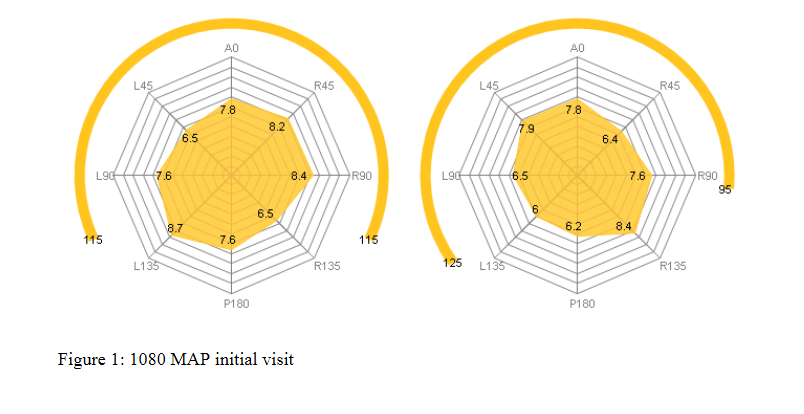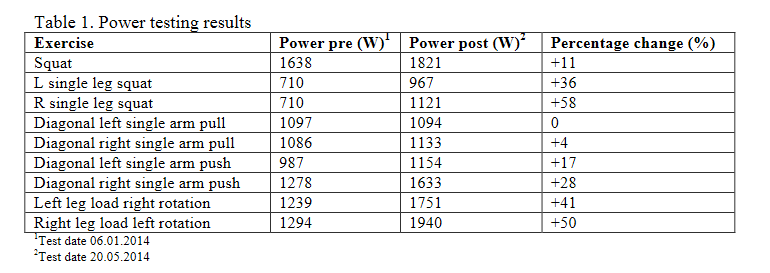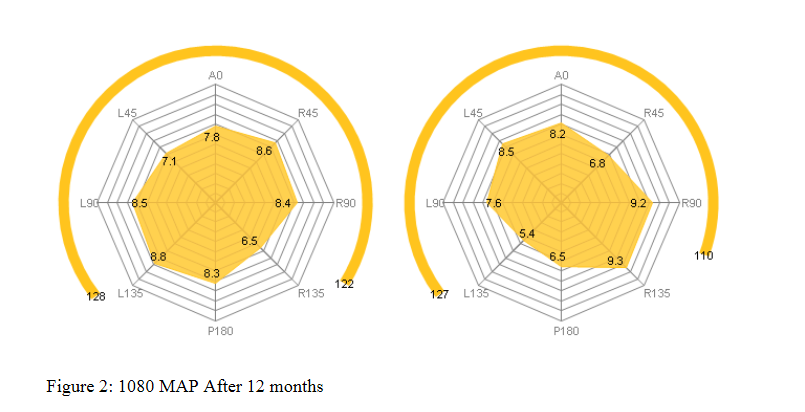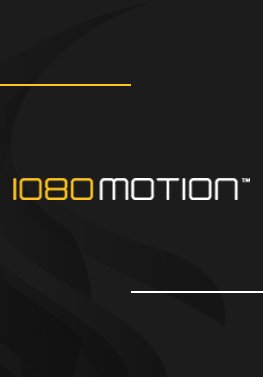The combined effect of improved mobility and power in a professional golfer – a case study
Ghelem, A. Eriksrud O. 1,2 1 Athletic 1080 AB, Stockholm, Sweden 2 1080 Motion AB, Stockholm, Sweden
Introduction
Performance in golf is measured by accuracy and distance, where the type of shot will determine their relative importance. The physical factors that determine golf performance are; mobility, stability, strength, power and endurance. Mobility and power have been reported to be more important than maximum strength in determining maximum club head speed (Hellstrom, 2009). Mobility, and in particular axial rotation, will provide the important distance needed to create speed. Power is important, since the downswing takes about 0.2–0.3 seconds for the average tour player, and the mass of the club is light as compared to 1 Repetition Maximum in axial rotation. Well trained top-class players with high club speed may therefore develop a slower club speed after a period of slow velocity strength training (Hellstrom, 2009). The purpose of this case study was to document the combined effect of flexibility and power training on club speed in a professional golfer.
Subject description
MJ is a professional golfer on the Nordea Tour that came to training 12 months ago to enhance performance. MJ upon initial evaluation suffered from low back and shoulder pain and complained of limited mobility in hips. He has a history of playing golf full time for 8 years, and as a professional the past 4 years. His major goal was to increase mobility and power in order to improve swing technique and club speed.
Examination
Mobility was tested bilaterally using the 1080 MAP Movement quick screen. Profiles standing on the left and right foot is presented in Figure 1 below. A total 1080 MAP movement score of 5,2 with a score of 5,7 and 4,8 for the left and right foot respectively.

These profiles were evaluated with the following conclusions: decreased right hip extension and internal rotation, decreased right shoulder horizontal abduction and external rotation and decreased thoracic left lateral flexion.
Then strength, power and speed were evaluated using 1080 Quantum (www.1080wordpresstest.azurewebsites.net). The following exercises were tested: Squat, single leg squat (left and right) with power testing at 50% of bodyweight (BW). Push, pull and golf swing with power testing at 10% of BW. Average power for all tests was 12 Watts/kgBW and peak power for golf swing (left rotation) 1425 watts. See Table 1 for details. These results/profiles were evaluated with the following conclusions: Two handed left rotation 10% less power than right, both left hand push and pull 10% less power (Table 1)

At the time on the initial visit club head speed of driver was evaluated using Trackman (Trackman AS, Denmark) yielding 117 mph with a carry of 280 meters.
Intervention
Mobility training focused on hip extension and rotations primarily right side, thoracic spine left lateral flexion and shoulder horizontal and external rotation (20 repetitions, 2 sets, 2 times /day frequency). Strength training, with a rotational focus, was performed with isokinetic resistance (speed restriction concentric phase 0,5 m/s and no limitation in the eccentric phase). Power training was performed with the No Flying Weight setting without any speed restrictions with 5, 10 and 15 kg load. Read more about load and speed options for the 1080 Quantum at (www.1080wordpresstest.azurewebsites.net). Training volume for all exercises as follows: 5 repetitions, 3 sets, 1/week)
Outcome
The same 1080 MAP profile was then performed after 12 months. Now the 1080 MAP score was 6,1 with a score of 6,4 and 5,8 left and right respectively. This is an overall increase of 17.3%, with an increased of 20.8% on the right side.

Power tests were repeated after about 5 months. Average power for all tests, 15 Watts/ kgBW, with peak power for in the golf swing (left rotation) 1875 watts, which is an increase of 31, 6 %. Furthermore, driver club head speed was found to be 124 mph with a carry of 305,5 meters after training, which is an improvement of 6,0% and 9,1% respectively. MJ also reports feeling better with more freedom in the golf swing on a general basis. Most important, performance in competitions has started out great this year with a victory in Nordea Tour Future Series in Abbekås, Sweden.
Discussion
1080 MAP shows an increase in both mobility and power that has translated into one important performance variable in driver club head speed. However the speed attained by MJ is above the average PGA tour average (113 mph, Trackman homepage) when starting out with the training. One might therefore argue that it might not be necessary to enhance this further. Regardless, an increased capacity in maximum club head speed will allow the athlete to attain a sufficient club head speed at a lower percentage of maximum. This buffer can then be related to the musculoskeletal system and the physical factors, mobility and power, which does not have to perform up to maximum with every repetition. This will give the athlete freedom to change strategies, since many view variability as a resource of the neurological and musculoskeletal system. This could possibly allow the athlete to stay free of injuries and sustain a high performance level over time.
Since both mobility, strength and power training was implemented we can not say which factor was the most significant in alleviating the low back and shoulder dysfunction or improving performance.
In conclusion, the combined effect of mobility, strength and power training based upon a global approach, full kinematic chain, improved performance and decreased dysfunction in a professional golfer.
References
Hellstrom, J. (2009). Competitive elite golf: a review of the relationships between playing results, technique and physique. Sports Med, 39(9), 723-741. doi: 10.2165/11315200- 000000000-00000

































































